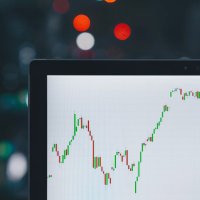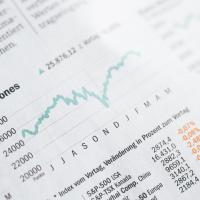Home > Investment Guide > Investing Basics
Stock Market Trading
Stock market trading normally involves opening a trade by going 'Long' (buying) or going 'Short' (selling). The later has been possible through the last few years. One can today 'sell' a stock with the aspiration that the stock goes down and buy it cheaper at a later time, thus making profit as a result of the diminishing of the stock value.
Greed and Fear Stock market trading can be very profitable but if not mastered correctly can lead to heavy losses and the loss of ones own capital. Various psychological factors can affect the way one trades. The most predominant ones are 'greed' and 'fear'. Greed kicks in when your system directs you to exit a trade but rather than exiting, one remains in the trade with the hope of closing the trade at a better price. On the other hand, fear is also a very dangerous factor which can lead to exiting trades when the time is not right, or exiting trades too early.
The best way to keep these feelings away is only one - follow your system vigorously. In order to fully trust a system, it would first need to go through a lot of testing in order to seed in one's mind the thought that the system works and is completely reliable. It is only when one is convinced of this that when the feelings of 'greed' and 'fear' rise, they are controlled and ignored.
CFD Trading One very interesting way of trading is CFDs (contracts for difference). Rather than buying and selling the actual shares, one would enter into a contract with a broker to buy or sell a particular share at an agreed price. The price would still be the market price at the current time, and the speed of transactions is similar to the speed of actually trading the shares, i.e. a few seconds. One of the advantages of CFDs is 'trading on margin'. Some brokers offer very competitive margins where, for example, with a capital of $20,000, one could trade shares for a total of $100,000. This can be very dangerous and is only advised to the professional market players.
Technical Analysis Hundreds of technical tools exist for traders. Various software systems can display a stock's chart in real time, enabling you to draw trending and trading lines, include calculations like moving averages and ratios, and some can even predict the price based on a combination of factors and previous training and testing cycles.
Charts Charts are a must for most stock traders. A chart tells the story much more than words do. By looking at a chart, a professional trader can diagnose the condition of a particular stock, just like a doctor does with his patient. Adding some analysis tools to a chart can further help in understanding what is going on with a particular stock.
On charts one can determine whether a stock is overbought or oversold, whether a stock is reaching a support or resistance level, is heavily in demand and short of supply or vice versa. As a result of these factors and many others which one can include in a system, a decision to buy, sell or exit trades can be taken.
Stock market trading is a high return job for those who are serious about it. Various methods exist and some degree of research is required before one can start trading for a living.
Sandro Azzopardi is a professional author who writes articles on his web site and local newspapers. http://www.theinfopit.com/business/stockmarket/stockmarkettrading.php
More to Read:
Previous Posts:




